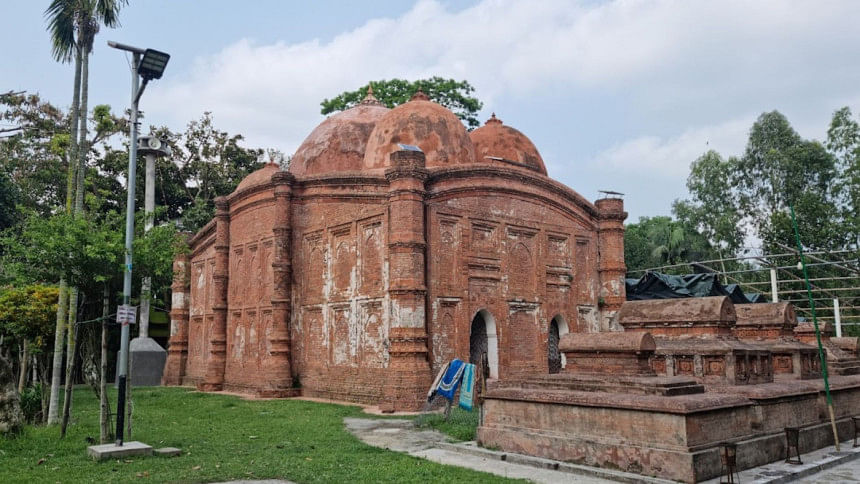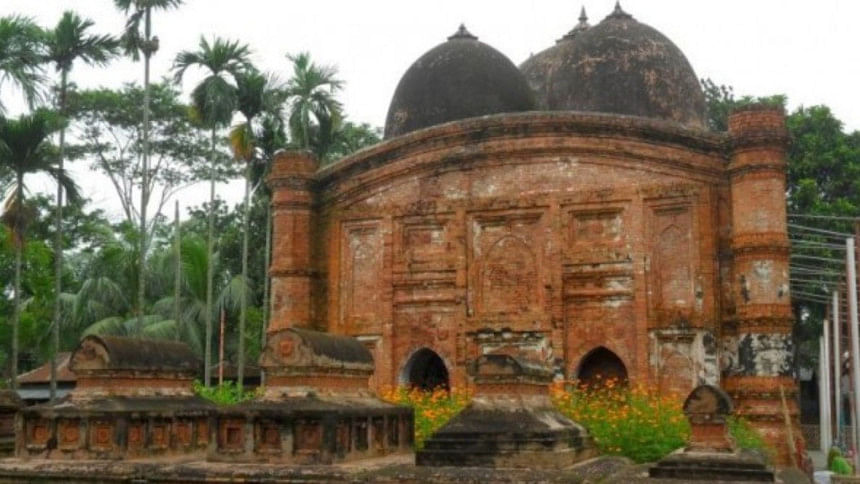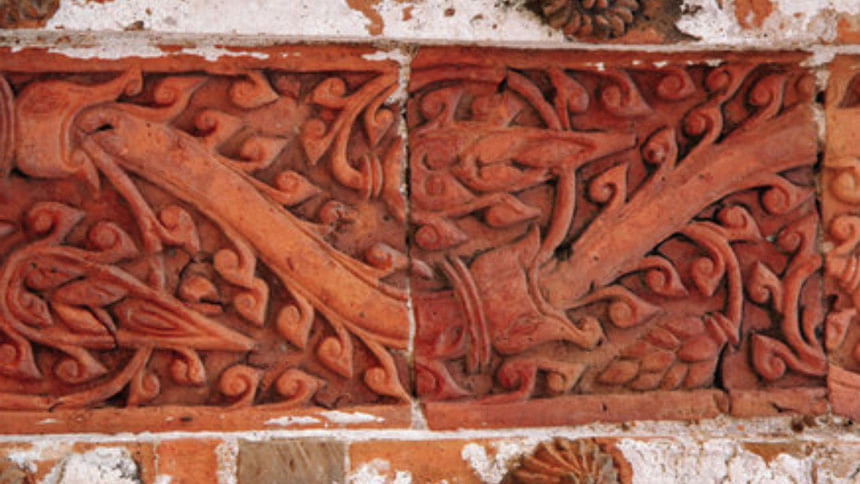Kutub Shah Mosque: A testament to country's architectural heritage

Nestled in the Austagram upazila of Kishoreganj, the Kutub Shah Mosque stands as one of Bangladesh's oldest and most significant archaeological landmarks.
Built in the 16th century, this five-domed mosque is a testament to the country's rich history and architectural heritage.
The mosque is named after Hazrat Kutub Shah (R), a revered saint believed to be one of the 360 Awlias who accompanied Hazrat Shah Jalal (R) to Bengal in the 14th century to spread Islam.

Adjacent to the mosque, his shrine continues to draw devotees.
Although no inscription has been found on the mosque's walls to determine its exact construction date, archaeologists estimate that it was built in the late 16th century during the Sultanate period.

The Department of Archaeology (DoA) recognised its historical significance and declared it a protected site in 1909.
Kishoreganj, known for its blend of ancient and modern architectural marvels, is home to 14 recognised archaeological sites, with nine already listed for preservation.
Among them are the Harshi Mosque, the memorial temples of Poet Dwijbangshi Das and Poet Chandrabati, Isha Khan's Palace in Jangalbari, Shadi Mosque, Shah Mahmud Mosque, Saheb Bari Mosque (Sekandarnagar), and Gurui Mosque.

Positioned beside a large lake in an open courtyard, the Kutub Shah Mosque showcases the distinctive style of Bangalee mosque architecture.
The structure is elongated along the north-south axis, with four octagonal minarets standing at its corners. The minarets feature ring-like ornamentations, adding to the mosque's grandeur.
The central dome is semi-spherical, while the other four domes are slightly oval-shaped. Each dome is adorned with an inverted, flower-like finial at the top. The mosque has three entrances on the eastern side, along with additional doorways on the north and south.
Along the western wall, three intricately designed mihrabs are present, enhancing the mosque's spiritual and aesthetic appeal.
One of the most striking features of the Kutub Shah Mosque is its external ornamentation. The walls are adorned with terracotta tiles bearing floral motifs, while the exterior showcases elaborate paneling work, a hallmark of traditional Bengali craftsmanship.
The mosque's curved cornices and meticulously designed architectural elements highlight the artistic excellence of the period.Preservation Efforts and Community Engagement
Local authorities and residents recognise the mosque's historical value and are actively involved in its preservation.
Dilsad Jahan, upazila nirbahi officer of Austagram, said a local committee has been entrusted with the security and maintenance of the site.
SK Rasel, a journalist from Kishoreganj, emphasised the need for further conservation efforts, describing the mosque as one of the district's most significant historical landmarks.
He said preserving such sites could boost tourism and transform the local economy.
Hundreds of visitors from across Bangladesh and beyond visit the Kutub Shah Mosque each year. The growing interest in historical tourism presents an opportunity to develop Kishoreganj into a prominent cultural destination.Future Plans for Conservation
Afroza Khan Mita, regional director of the DoA (Dhaka and Mymensingh), confirmed ongoing efforts to restore and preserve Kishoreganj's archaeological sites, including the Kutub Shah Mosque.
Recently, the department completed renovations of the Darbar Hall and a mosque at Jangalbari.
Additionally, the DoA plans to conduct surveys in three upazilas -- Karimganj, Nikli, and Bajitpur -- to identify and document more archaeological sites, he said.
An excavation project at Jangalbari is set to begin soon.
A comprehensive proposal for the preservation, renovation, and excavation of archaeological sites in the Mymensingh region has been submitted, but it is still awaiting approval, he added.A Call for Greater Preservation Efforts
The Kutub Shah Mosque stands as a silent witness to centuries of history, culture, and religious devotion. While efforts are being made to protect and restore it, greater investment in archaeological conservation is needed to ensure that this architectural treasure -- and others like it -- remains preserved for future generations, said experts and archaeologists.
They said by safeguarding these heritage sites, Kishoreganj has the potential to emerge as a significant hub for historical tourism, enriching both its cultural identity and economic prospects.

 For all latest news, follow The Daily Star's Google News channel.
For all latest news, follow The Daily Star's Google News channel. 



Comments